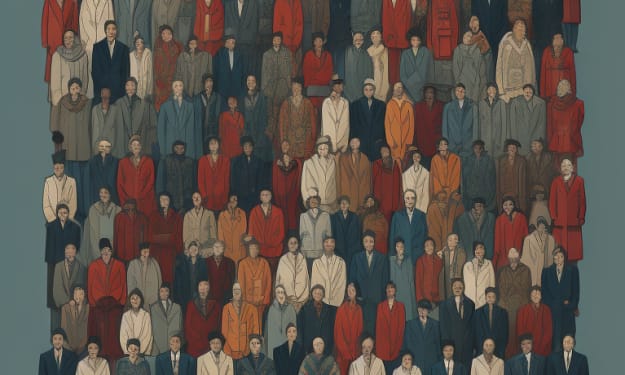
Fear, a primal and instinctual response, has been intricately woven into the fabric of human existence since time immemorial. Delving into the annals of evolution, psychology, and anthropology, we unravel the enigmatic origins of this powerful emotion, seeking to understand why fear has persisted as an indispensable aspect of the human experience.
An Evolutionary Blueprint:
In the vast tapestry of evolutionary history, fear emerges as a survival mechanism finely honed by natural selection. The ability to perceive and respond to threats was, and continues to be, a crucial factor in the survival of species. Early humans who developed an acute sense of fear were more likely to evade predators, navigate perilous environments, and form cohesive social groups for mutual protection.
The neurological underpinnings of fear are deeply rooted in the limbic system, a primitive part of the brain responsible for processing emotions. This ancient survival blueprint remains remarkably conserved across species, emphasizing the fundamental role fear plays in ensuring survival and procreation.
Primitive Perils and Contemporary Anxieties:
The fears that once safeguarded our ancestors from immediate physical dangers have transcended the primitive landscape and adapted to the complexities of modern life. While the threat of predators may have diminished, contemporary humans grapple with an array of intangible fears—financial instability, social rejection, existential questions—that tap into the same primal circuitry.
The adaptability of fear allows it to shape-shift across contexts, responding to the unique challenges presented by each era. From the fear of the unknown in unexplored territories to the fear of the unseen in the digital realm, our innate capacity for fear remains a dynamic force, evolving alongside the intricacies of our environment.
The Cognitive Revolution:
As humans embarked on the cognitive revolution, fear began to transcend the immediate and concrete. The development of complex thought processes allowed for the anticipation of future threats and the conceptualization of abstract fears. The fear of death, the fear of the supernatural, and the fear of societal ostracism became integral components of human consciousness, influencing behavior, rituals, and cultural narratives.
With the ability to imagine and plan for the future, humans found themselves grappling with fears that extended beyond the present moment. This cognitive leap marked a pivotal juncture in the evolution of fear, shaping the narratives of cultures and civilizations as they sought to navigate the uncharted territories of the mind.
Cultural Constructs and Fearful Narratives:
Cultures, acting as collective tapestries of shared beliefs and values, have woven intricate narratives around fear. Myths, folklore, and religious doctrines often encapsulate societal fears, providing a framework for understanding and coping with the unknown. Fear, in this context, serves as both a cautionary guide and a shared language through which communities make sense of their collective anxieties.
The archetypal figures that populate cultural narratives—demons, monsters, and malevolent spirits—embody the multifaceted nature of human fears. These symbolic representations not only externalize internal anxieties but also offer a means of control through rituals, taboos, and communal practices.
Neurobiology of Fear:
At the neurobiological level, fear is orchestrated by a complex interplay of neurotransmitters and neural circuits. The amygdala, a key player in emotional processing, acts as the sentinel, swiftly detecting potential threats in the environment. This rapid response triggers the release of stress hormones, preparing the body for the classic fight-or-flight response.
The intricate dance between neurotransmitters, hormones, and neural pathways provides insight into the intricate machinery that underlies fear. Understanding this neurobiological orchestra allows researchers and clinicians to explore avenues for mitigating excessive fear responses, offering hope for individuals grappling with phobias, anxiety disorders, and post-traumatic stress.
Learned Fear and Conditioning:
While innate fears are hardwired into our evolutionary heritage, humans are also adept at learning fear through conditioning. Classical conditioning, famously demonstrated by Pavlov's experiments with dogs, reveals how neutral stimuli can become associated with fear-inducing events. This learned fear extends beyond immediate threats, contributing to the development of phobias and anxiety disorders.
The malleability of fear, shaped by both nature and nurture, underscores the complexity of this emotion. A nuanced understanding of the interplay between innate fears and learned responses opens avenues for therapeutic interventions and strategies to alleviate the impact of maladaptive fear.
Existential Fears and the Human Condition:
Existential fears, rooted in the contemplation of mortality, purpose, and the unknown, are distinctive hallmarks of the human condition. As self-aware beings, humans grapple with the awareness of their finite existence—a reality that gives rise to profound existential anxieties. The fear of death, the fear of meaninglessness, and the fear of isolation become existential crucibles that shape the narratives of individual lives.
Philosophers, theologians, and psychologists have delved into the nuances of existential fears, offering frameworks for individuals to navigate the complexities of their inner landscapes. From existentialist philosophies emphasizing personal responsibility to religious doctrines offering solace in the face of the unknown, these frameworks provide varied responses to the existential questions that underpin our deepest fears.
The Modern Paradox:
In an age marked by unprecedented technological advancements and scientific achievements, fear persists as a paradoxical companion. The same progress that has liberated humanity from many primal threats has given rise to novel anxieties—cybersecurity threats, ecological crises, and ethical dilemmas that accompany scientific breakthroughs.
The paradox of modern fear lies in the coexistence of unprecedented knowledge and persistent uncertainty. While scientific inquiry has illuminated many mysteries, the vastness of the unknown continues to evoke fear, challenging humanity to navigate a landscape where the boundaries between the known and unknown are in constant flux.
Embracing and Transcending Fear:
Understanding the origins of fear does not diminish its potency but offers a roadmap for cultivating a nuanced relationship with this primal emotion. Acknowledging the evolutionary, cultural, and psychological roots of fear empowers individuals to discern rational concerns from irrational anxieties, fostering resilience in the face of life's uncertainties.
The exploration of fear, from its evolutionary inception to its contemporary manifestations, invites a reflection on the shared threads of human experience. In unraveling the enigma of fear, we find not only the intricacies of our collective psyche but also the potential for growth, resilience, and the transcendence of our deepest apprehensions.
About the Creator
Kei Ben
A fresh read goes a long way.






Comments
Kei Ben is not accepting comments at the moment
Want to show your support? Send them a one-off tip.